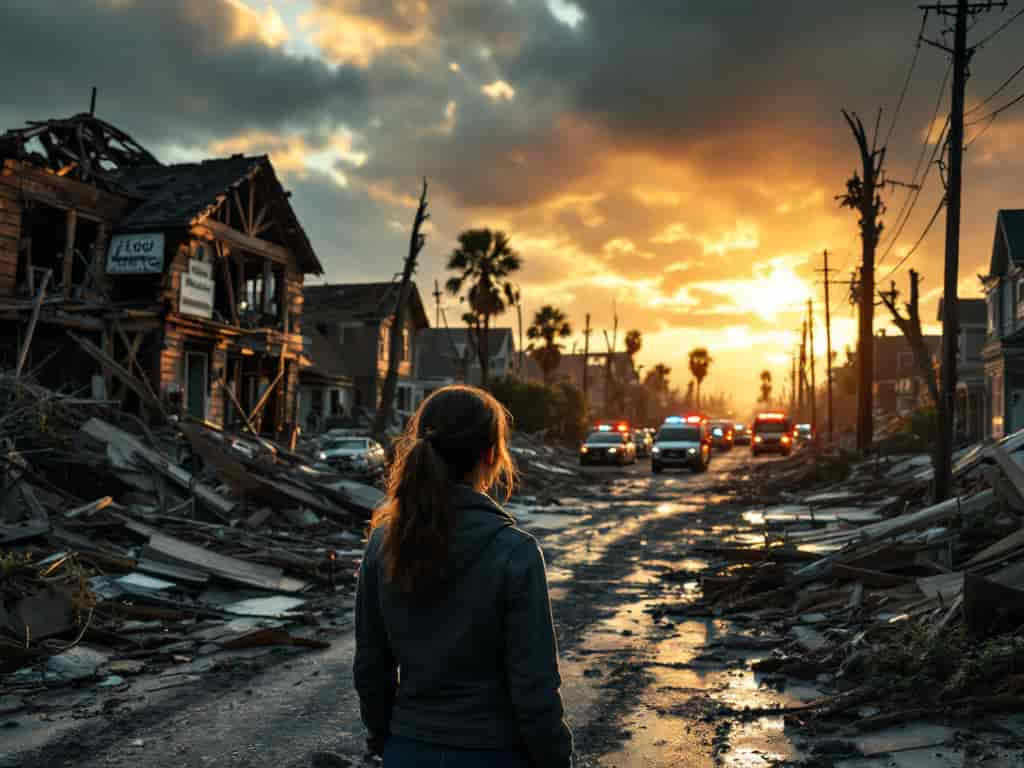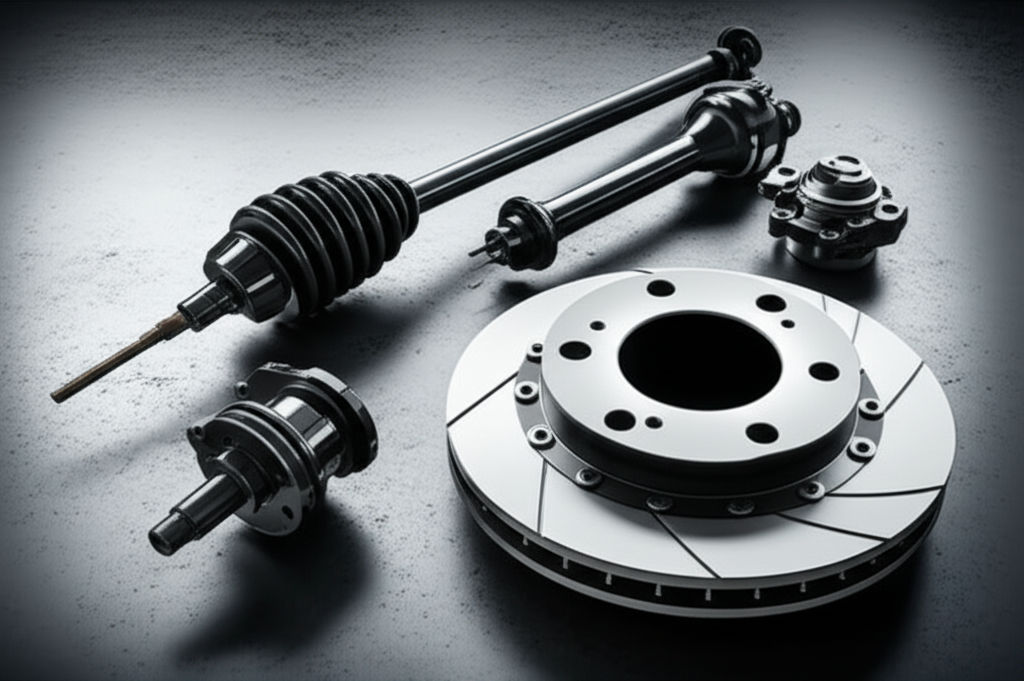What Natural Disaster Insurance Covers
Ellie Moore

Photo: What Natural Disaster Insurance Covers
What Natural Disaster Insurance Covers: A Comprehensive Guide
Natural disasters are unpredictable, devastating, and often life-altering events. Whether it’s a hurricane, earthquake, flood, or wildfire, the financial impact of these events can be overwhelming. This is where natural disaster insurance comes into play, providing a safety net that helps individuals and businesses recover. But what exactly does natural disaster insurance cover, and how can it protect you in times of need?
In this article, we’ll break down the types of natural disasters covered by insurance, the specifics of what these policies entail, and how you can ensure you have the right coverage to protect your property. Let’s dive in!
What is Natural Disaster Insurance?
Natural disaster insurance is a type of coverage that protects you financially against damage caused by unexpected, large-scale natural events. These policies can cover property damage, loss of belongings, and sometimes even living expenses while your home is uninhabitable. Natural disaster insurance is often part of your broader homeowners or business insurance, but it can also be purchased separately, depending on the region and the type of disaster.
Types of Natural Disasters Covered by Insurance
Natural disaster insurance doesn’t apply to every disaster in the same way. Some events are automatically included in policies, while others might require additional coverage or endorsements. Let’s look at the most common natural disasters covered by insurance:
1. Hurricanes and Tornadoes
Hurricanes and tornadoes can cause severe damage, including high winds, flooding, and structural destruction. Most homeowners' insurance policies in areas prone to hurricanes will cover wind damage. However, if flooding occurs as a result of a storm, additional flood insurance might be needed.
- Coverage typically includes:
- Wind damage
- Roof and structural damage
- Tree removal (if trees fall on the property)
- Temporary living expenses if your home is uninhabitable
- Tip: Always check with your insurance provider to ensure that flood damage is included. Many homeowners mistakenly assume that flood damage is part of their storm coverage when, in reality, it requires a separate policy.
2. Earthquakes
Earthquakes can shake homes to their foundation, causing cracks, structural instability, and even total collapse. Earthquake coverage is often an optional add-on or endorsement to standard homeowners insurance policies.
- Coverage typically includes:
- Structural damage to buildings
- Damage to personal property
- Earthquake-related fire damage
- Tip: In earthquake-prone areas, consider a separate earthquake insurance policy as many standard policies exclude earthquake damage.
3. Floods
Floods can be triggered by a variety of natural events, such as heavy rainfall, storms, or melting snow. While homeowners insurance may cover some storm damage, it typically does not include flood damage. The National Flood Insurance Program (NFIP) offers coverage for flood-related damages, which is a separate policy from your standard insurance.
- Coverage typically includes:
- Damage to the structure (walls, floors, and foundation)
- Personal property damage (furniture, electronics, etc.)
- Mudslides or flood-related erosion
- Tip: If you live in a flood-prone area, purchasing flood insurance is essential. Standard homeowners policies usually don’t cover flooding.
4. Wildfires
Wildfires can spread quickly and devastate entire neighborhoods, especially in dry, forested regions. Most homeowners insurance policies will cover wildfire damage to your home and personal property. However, depending on where you live, your premiums may be higher in areas that are at greater risk for wildfires.
- Coverage typically includes:
- Structural damage from flames and heat
- Smoke damage
- Evacuation expenses if mandated by local authorities
- Tip: In high-risk wildfire areas, make sure your insurance policy has adequate coverage to handle the high cost of rebuilding. Consider additional coverage for outbuildings or structures like fences.
5. Landslides and Mudslides
Landslides and mudslides can occur after heavy rainfall, especially in mountainous or hilly areas. Some policies may cover damage caused by these events, but they can often require a specific rider or endorsement to be added to your policy.
- Coverage typically includes:
- Damage to homes and outbuildings
- Loss of landscaping or gardens
- Personal property damage (if the property is affected)
- Tip: If you live in an area prone to landslides, inquire specifically about coverage for these events, as they are often excluded from standard policies.
Does Natural Disaster Insurance Cover Personal Belongings?
One of the most important aspects of natural disaster insurance is its coverage for personal belongings. Most policies will cover personal property, but the specifics depend on the type of disaster.
- Coverage for personal belongings typically includes:
- Furniture, electronics, and appliances
- Clothing and valuables
- Jewelry (if a rider or additional coverage is added)
However, it's essential to note that insurance companies often place limits on valuable items like jewelry, artwork, or collectibles. If you own high-value items, you may need to add a separate rider for coverage.
What Isn’t Covered by Natural Disaster Insurance?
While natural disaster insurance offers significant protection, there are exclusions that homeowners should be aware of. Understanding these exclusions is key to ensuring you have comprehensive coverage.
1. General Wear and Tear
Insurance typically doesn’t cover damage resulting from neglect, wear and tear, or poor maintenance. For example, a roof that collapses due to age and deterioration wouldn’t be covered under a natural disaster insurance policy.
2. Negligence
If the damage occurs due to your negligence such as failing to prepare your home for an impending storm your insurer may not cover the loss.
3. Earth Movement
While earthquakes are covered by specific policies, some insurers may exclude other forms of earth movement, such as sinkholes or mudslides, unless explicitly covered by a separate policy or endorsement.
4. Flooding from Sewage Backup
If flooding is caused by a broken sewage line rather than natural rainfall or a storm, that damage may not be covered. However, flood insurance often covers storm-related flooding.
How to Choose the Right Natural Disaster Insurance Coverage
Choosing the right natural disaster insurance coverage can be a daunting task, but here are a few tips to help you make an informed decision:
1. Understand Your Risk
Start by assessing your risk of natural disasters in your area. Are you living in a hurricane zone, wildfire-prone area, or earthquake country? The higher your risk, the more you should consider adding additional coverage for specific types of disasters.
2. Review Policy Exclusions
Ensure that you are aware of what your policy doesn’t cover. Ask your insurer to provide you with a detailed list of exclusions and consider adding extra coverage or endorsements if necessary.
3. Compare Providers
Not all insurance providers are the same. Some may offer more comprehensive coverage than others or may have policies tailored specifically to your region. Take the time to compare providers, rates, and policies to find the best fit.
4. Invest in Flood Insurance
As mentioned earlier, many standard homeowners insurance policies don’t cover flood damage. If you live in a flood-prone area, make sure to purchase separate flood insurance through the NFIP or a private insurer.
Final Thoughts: Are You Covered for Natural Disasters?
Natural disaster insurance is a vital safety net in an increasingly unpredictable world. By understanding what your policy covers and ensuring you have the right protection for your property, belongings, and loved ones, you can mitigate the financial burden of a disaster. Don’t wait for disaster to strike review your policy today and consider adding coverage for the risks specific to your location.
FAQ: Natural Disaster Insurance
1. Is earthquake damage covered by standard homeowners insurance?
No, earthquake damage is typically excluded from standard policies but can be added through a separate earthquake insurance policy.
2. Does homeowners insurance cover flood damage?
No, flood damage is not included in most homeowners insurance policies. You must purchase a separate flood insurance policy.
3. Can I add wildfire insurance to my policy?
Yes, many homeowners insurance policies offer coverage for wildfires, but in high-risk areas, it may be necessary to review your coverage limits or add specific endorsements.
4. What should I do if my home is uninhabitable due to a natural disaster?
Check if your policy includes additional living expenses (ALE) coverage, which can help cover the cost of temporary housing.
Don’t wait for disaster to knock on your door take action today and secure the insurance coverage that keeps you protected.
Finance & Investment
View All
March 21, 2025
Kia Finance Phone Number and Quick SupportUnlock top rankings with expert SEO content. Learn how E-E-A-T (Experience, Expertise, Authoritativeness, Trustworthiness) creates valuable, people-first conten...
Ellie Moore

November 16, 2024
Top 5 Budgeting Apps That Will Save You Money InstantlyDiscover the top budgeting apps that will transform your financial life! Learn how these apps can help you track expenses, save money, and achieve your financial goals. Download now and start saving!
Ellie Moore

June 7, 2025
How Co Financed Projects Drive Big SuccessDominate search results with expert SEO content. Discover how to create high-quality, authoritative content that meets user intent and builds E-E-A-T.
Ellie Moore

November 23, 2024
7 Ways to Prepare Financially for a RecessionRecession-proof your finances with these 7 essential strategies! Learn how to prepare for economic downturns, protect your assets, and navigate financial challenges. Start building resilience today!
Ellie Moore

November 17, 2025
Muslim Friendly Car Finance OptionsUnlock higher rankings & build trust with expert SEO content. Learn how E-E-A-T drives organic traffic & conversions for lasting online success.
Ellie Moore

January 13, 2025
Owner Financing Homes in San AntonioGo beyond basic SEO. Learn to create expert content that leverages E-E-A-T to build credibility, rank higher, and truly engage your audience in 2024.
Ellie Moore
Insurance
View AllProtect your freelance career with tailored insurance. Discover coverage options for self-employed individuals.
Ellie Moore
Is pet insurance right for you? Explore the pros, cons, and costs of coverage to keep your furry friend healthy.
Ellie Moore
Don't let vet bills break the bank. Discover top pet insurance solutions to secure your furry friend's health and your financial peace of mind.
Ellie Moore
Protect your assets! Secure optimal premium renters insurance coverage & peace of mind. Avoid financial loss with our comprehensive guide.
Ellie Moore
Discover how lifestyle changes, like quitting smoking or driving less, can unlock insurance discounts. Start saving now!
Ellie Moore
Protect your paycheck with disability insurance. Learn why income protection is a must-have for financial security.
Ellie Moore
Education
View AllLifelong learning is the new normal! Discover why continuous learning is essential for personal growth, career success, and adapting to change.
Read MoreHelp students develop a love for learning! Discover effective ways to foster a growth mindset in students and promote lifelong success.
Read MoreUnderstanding memory is key to better teaching. Learn how memory functions and how to use this knowledge to enhance teaching techniques.
Read MoreDigital citizenship teaches responsible tech use. Learn how to help students navigate the digital world safely and ethically.
Read MoreMOOCs are transforming the landscape of higher education. Learn how massive open online courses are making learning accessible to all.
Read MoreHelp students master metacognition! Learn how teaching students to think about their thinking can improve problem-solving and critical thinking skills.
Read MorePopular Post 🔥
View All
1
2
3
4
5
6
7
8
9
10
Health






Automotive
View All
September 3, 2025
Best Automotive Polishing Compound For Shine
Transform your car's paint! Discover how to use automotive polishing compounds to eliminate defects & achieve a brilliant, mirror-like shine.

July 19, 2025
What You Should Know About Semi Automotive Parts
Demystify semi-automotive parts! Learn what they are & why they're crucial for your vehicle's safety, performance, and longevity. Essential guide for car owners...

August 19, 2025
B and D Automotive Honest Car Repairs
Tired of auto repair uncertainty? B and D Automotive builds trust with honest, transparent service, fair pricing, and genuine care for your vehicle.

February 15, 2025
Vehicle Recalls: What You Need to Know
Concerned about a vehicle recall? Learn what steps to take and how to stay informed about recalls affecting your car. Stay safe on the road!

July 17, 2025
JT Automotive Services Worth Checking Out
Unlock peace of mind & vehicle longevity. Discover why choosing the right car care partner, like JT Automotive Services, truly matters.

August 9, 2025
Launch Automotive Scan Tool Features And Benefits
Master your car's health with Launch scan tools. Get deep insights, accurately diagnose issues, and save on costly repairs.

















